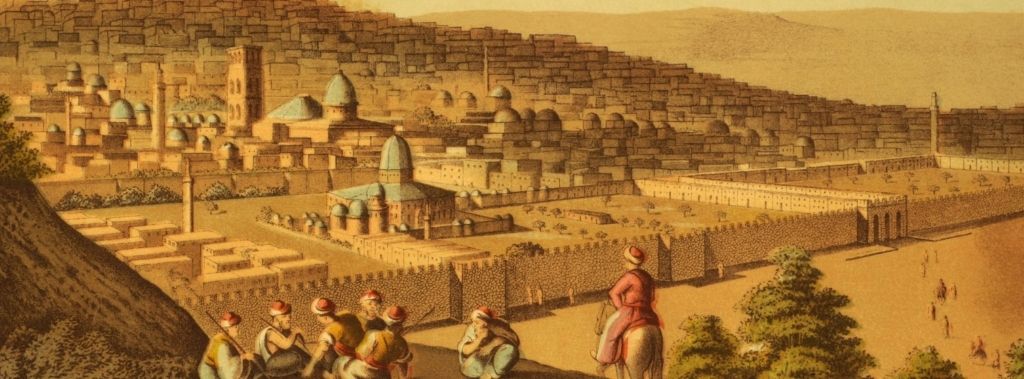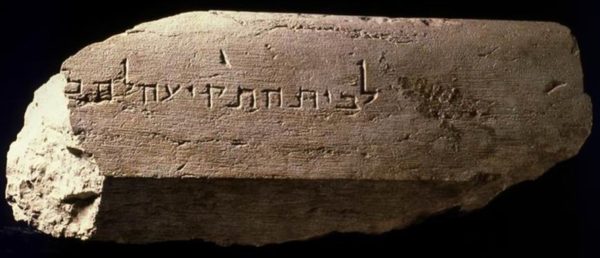Table of Contents
Every year, Jerusalem Day is celebrated on the 28th of Iyar in the Hebrew calendar—or in proximity to that date. While this day largely commemorates the miraculous victory of the Six-Day War that brought Jerusalem back into Israeli possession, without its connection to Jerusalem in the Bible, there would be much less to celebrate.
Join us as we discover the biblical significance of Jerusalem, some of the artifacts such as Jerusalem’s walls, and how Jewish and Gentile Believers have a unique connection to Jerusalem…
Jerusalem in the Bible
Our existence began in the Garden of Eden. Since then, creation has been wandering—searching for things we cannot see. We may not perceive the entire picture, but God does; He sees it, and reveals aspects of it to us in many ways, one of these being through His Word…
Nothing in the Bible is without purpose. If an event is mentioned, it is important. If an aspect of God is mentioned, it is important. If a place is mentioned… well, it is important. And Jerusalem—the capital city of the Promised Land, where the Temples for God were built, and where kings, and the King of Kings, walked—is no exception.
“If I forget you, O Jerusalem,
—Psalm 137:5-6
let my right hand forget its skill!
If I do not remember you,
let my tongue cling to the roof of my mouth—
if I do not exalt Jerusalem
above my chief joy.”
Sometimes referred to as the ‘City of Peace’ or even as ‘Jerusalem of Gold,’ Jerusalem is a city with thousands of years of history, and some of Jerusalem’s walls are still standing today.
As one of the most well-known and historic cities in the world, Jerusalem is notable for many reasons, not least of which is the importance of Jerusalem in the Bible—where Jerusalem is mentioned by name over 800 times and the command is given to pray for the peace of Jerusalem.
“Pray for the peace of Jerusalem:
‘May they prosper who love you.
Peace be within your walls,
prosperity within your palaces.’
For the sake of my brethren and companions,
I will now say, ‘Peace be within you.’”
—Psalm 122:6-8
Jerusalem’s Walls and Other Artifacts
Given Jerusalem’s age and importance, it is no surprise that of all the cities in Israel, Jerusalem has the widest range and quantity of artifacts—as well as what could be argued as the greatest biblical importance.
While many artifacts were found before modern Israel became whole, since Israel’s restoration in the mid-20th century, archaeology—specifically, archaeology focused on the Word—has been paramount in the attentions of Israel and the nations. Further, the number of digs, particularly in Jerusalem, have grown astronomically—as have the number of archaeological colleges, universities, and museums.
Jerusalem has changed over time, yet certain things remain. For instance, many of Jerusalem’s walls survive today, appearing as they would have during the time of Jesus—even the former kings of Israel, to an extent. And presently, these walls are, as they would have been thousands of years ago, one of the crowning features of the city.
“I have set watchmen on your walls, O Jerusalem;
—Isaiah 62:6-7
they shall never hold their peace day or night.
You who make mention of the Lord, do not keep silent,
and give Him no rest till He establishes
and till He makes Jerusalem a praise in the earth.”
Without the golden walls of Jerusalem, it would be much like any other city in appearance. Without them, so much of the history could have been lost—including the realization that Jesus Himself walked past those walls, touching many of the places that stand today.
Yet, despite this, many of the walls were built over or damaged in the centuries prior to, and even after, Jesus’ life… seemingly lost to time until the recent return of the nation, Israel.
Since Israel has become a nation once more and reclaimed Jerusalem, various layers of the Old City portion of Jerusalem have been uncovered after centuries of obscurity…
For instance, in the 1970s, King Hezekiah’s additions to Jerusalem—such as areas of the city walls themselves—were uncovered. Meanwhile, around this same time, excavations along the southwest corner of the Temple Mount uncovered thousands of years of history and stones. Unfortunately, despite these amazing finds, scarce funding combined with wars and rumors of wars, caused many digs in Israel to be halted.
In the mid-1990s, the excavations—which had begun near the southwest corner of the Temple Mount—were reopened, uncovering aspects of the Temple Mount and city that had scarcely been known since the time of Jesus. The Herodian street, which ran for 70 meters along the western wall of the Temple Mount, was exposed… and between the street and the Temple Mount were found a row of shops—ones which Jesus may have passed on His many trips to the Temple.
This uncovered area was impressive—not only in terms of scale, but in function. Arches, of which little more than bases remain, would have given the street and stalls an imposing and stable nature. Meanwhile, the stones paving the streets below were thick and durable with excellent drainage systems that meant even when weather was foul, the shops were in little danger of flooding. Indeed, had invading forces not pushed massive stones from the uppermost Second Temple walls onto that street, both the paving and columns would likely have remained fairly intact to this day.
Yet, while the street itself was an amazing archaeological discovery, one of the stones that had been pushed from the Temple wall above onto the street provides interesting insights not only into the past, but into the Word of God!This famous stone from the southwest corner of the Temple wall that was found on the street below was engraved with the words, “To the place of trumpeting”—the location for announcing things such as the biblically commanded Sabbath and High Holy days via trumpets or shofars. This was a sound and sight that Jesus Himself would have experienced during His days spent in Jerusalem, as the trumpets were sounded near the Temple.
“Many people shall come and say, ‘Come, and let us go up to the mountain of the Lord, to the house of the God of Jacob; He will teach us His ways, and we shall walk in His paths.’ For out of Zion shall go forth the law, and the word of the Lord from Jerusalem.”
—Isaiah 2:3
Israel and Its Importance to Us Today
While not all of us have the opportunity to travel to Jerusalem, it remains the city to which all Believers are connected. For our biblical roots lie not only in our Jewish brothers and sisters, but in the land of Israel itself. After all, not only did Jesus—a Jew—live and teach in that land, but it is from Jerusalem that Jesus will reign on earth!
Today, even if we are separated from the Promised Land by miles and oceans, we are still connected to that land through God’s Word, through artifacts such as Jerusalem’s walls, through knowing that Jesus will reign there, and through the promises of God Himself that speak of restoring not only Jerusalem, but all of Israel!
Yet we can do more than simply sit and read of God’s Promised Land. We can pray for the peace of Jerusalem and all of Israel. We can teach others of the importance of the Holy Land. We can support the economy of Israel by purchasing Israeli made products. And we can build up the land, bringing it to life as the prophets of the Word foretold: causing the desert to bloom and preparing the land for the return of our Messiah Yeshua!










